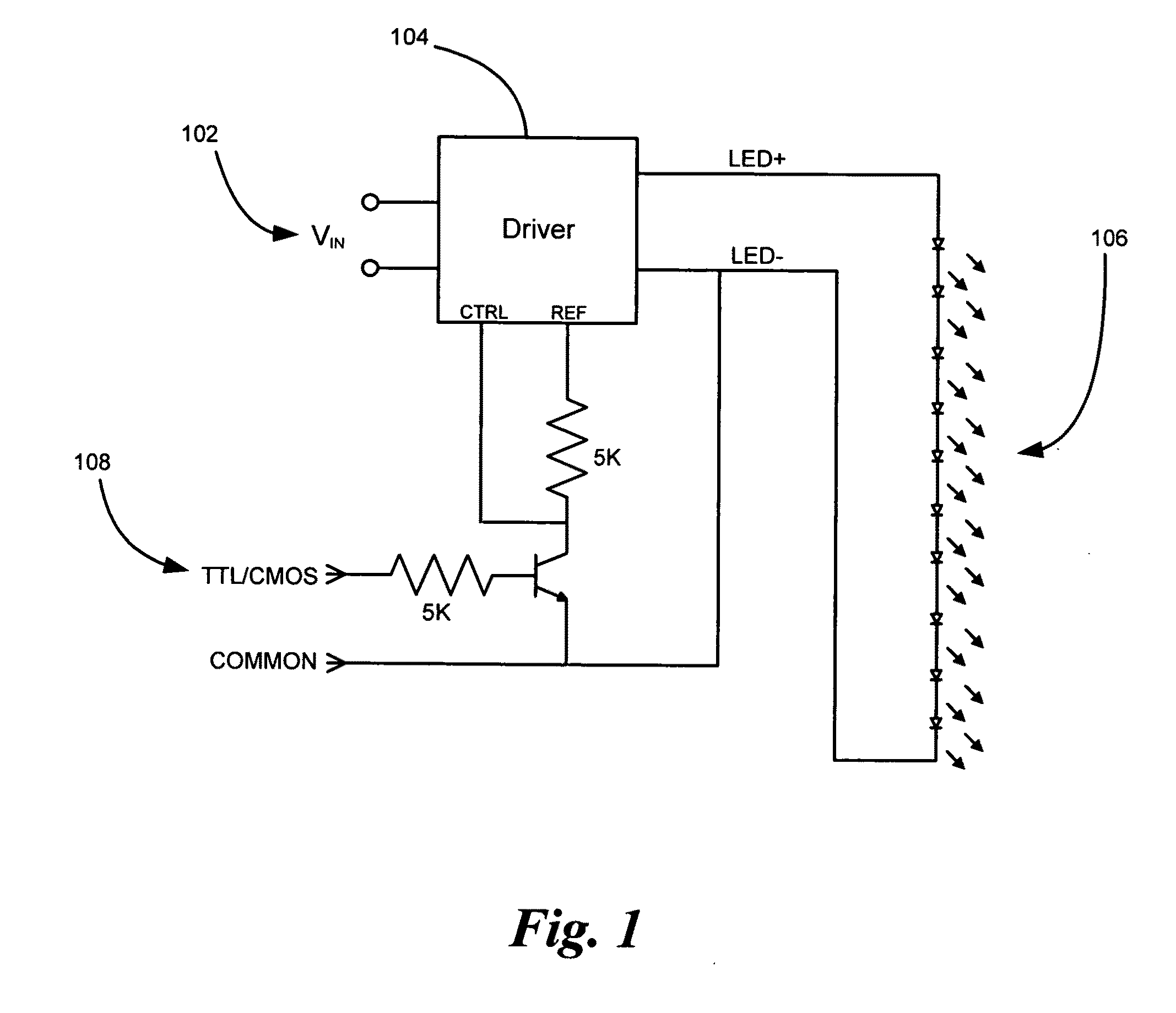LED dazzler shield
a shield and shield technology, applied in the field of light source systems, can solve the problems of unsuitable crowd control situations with more than a few subjects, limited range of tasers, unsuitable for subduing more distant subjects, etc., to achieve enhanced crowd control, increased user safety and utility of invention, and increased illumination
- Summary
- Abstract
- Description
- Claims
- Application Information
AI Technical Summary
Benefits of technology
Problems solved by technology
Method used
Image
Examples
Embodiment Construction
[0023]The present invention may be implemented in a number of form factors. Common to all embodiments, however, are an array of light emitting diodes driven by driver circuitry supplied with power from a power supply and operating in response to a signal source.
[0024]Turning to FIG. 1, illustrated is schematic electronic circuitry for a driver circuit powering an array of light emitting diodes. Power 102 is supplied to LED driver 104. In many applications, the dazzler device must be mobile and so typically the source of power 102 is a form of battery or fuel cell capable. It should be noted in any case that the amount of power necessary to drive an LED dazzler is considerably less than that for laser dazzlers and accordingly the power supplies for embodiments of the present invention may be much smaller and lighter than power supplies for laser based dazzlers.
[0025]In preferred embodiments, driver 104 should be pulse / strobe capable and should drive LEDs with constant current, result...
PUM
 Login to View More
Login to View More Abstract
Description
Claims
Application Information
 Login to View More
Login to View More - R&D
- Intellectual Property
- Life Sciences
- Materials
- Tech Scout
- Unparalleled Data Quality
- Higher Quality Content
- 60% Fewer Hallucinations
Browse by: Latest US Patents, China's latest patents, Technical Efficacy Thesaurus, Application Domain, Technology Topic, Popular Technical Reports.
© 2025 PatSnap. All rights reserved.Legal|Privacy policy|Modern Slavery Act Transparency Statement|Sitemap|About US| Contact US: help@patsnap.com



